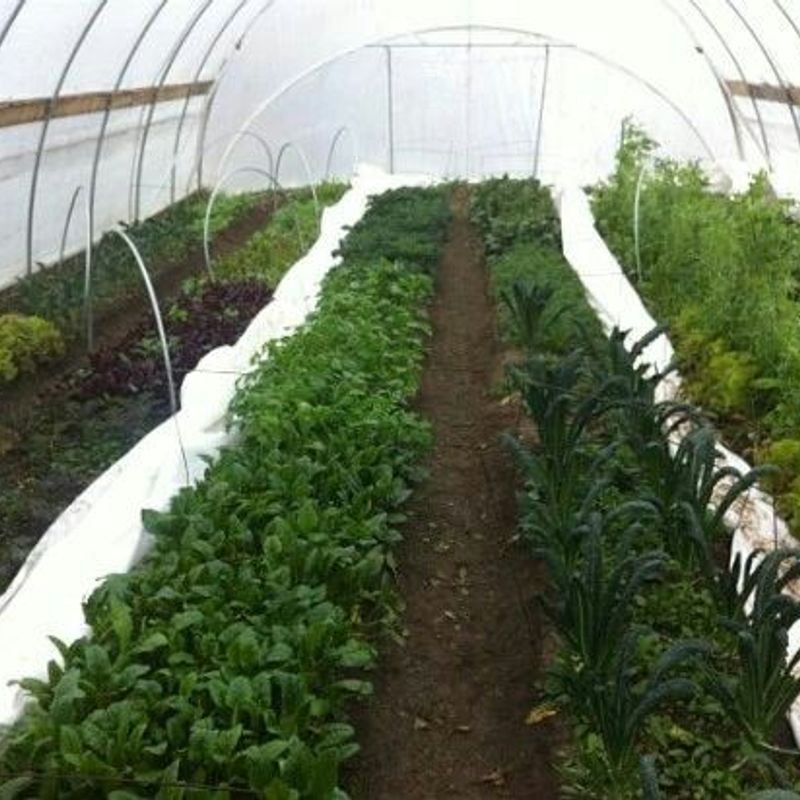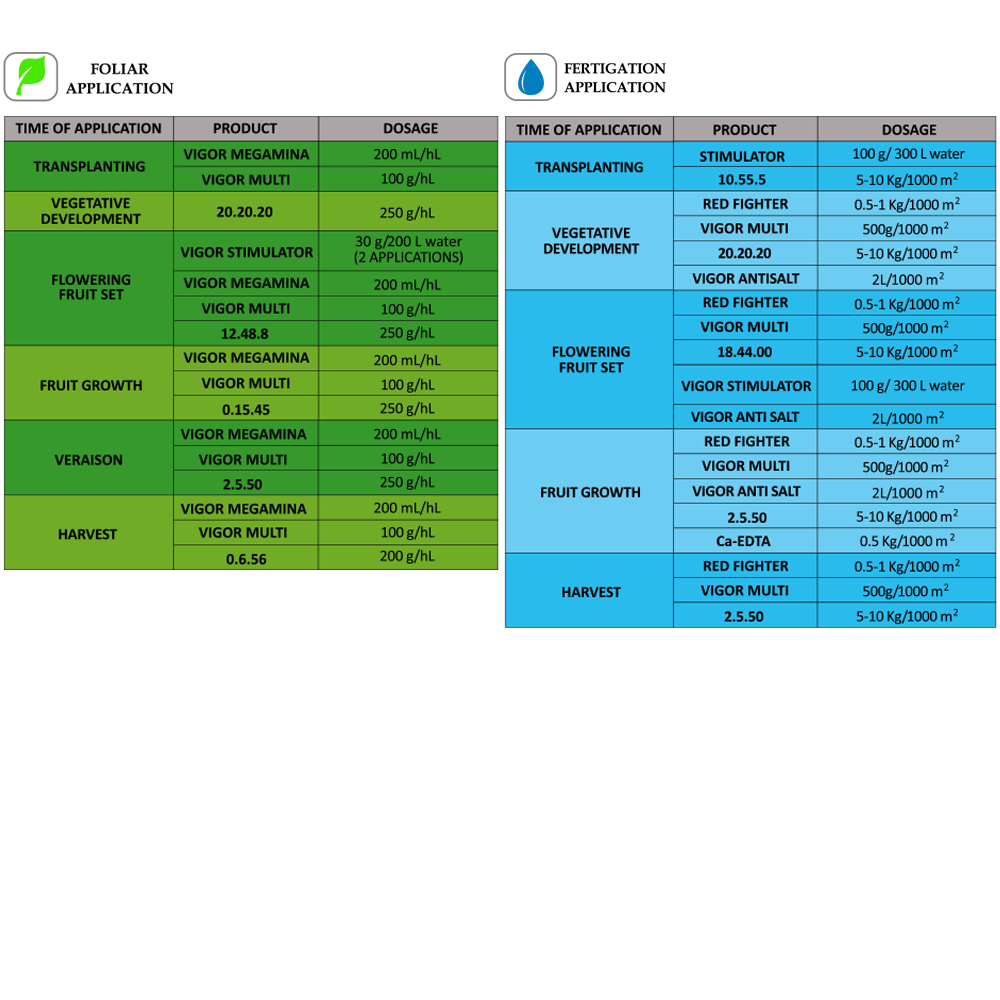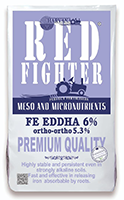Irrigation and Fertilization Plans

A guide to proper watering techniques
Proper watering techniques are important for developing uniform, quality crops, reducing root disease issues and controlling plant growth. Symptoms of improper watering include uneven drying, reduced shoot and root growth and weak plants with poor shelf life. Plants that are watered improperly will cost more to produce. This can be seen in not only the loss in quality, but also increased usage of pesticides and plant growth regulators to compensate for improper watering techniques.
When to water
Knowing when to water is critically important. An advantage of a peat-based growing medium is that the color of the growing medium can be used as an indication of when to water. For example, when the growing medium surface is black and shiny to dark brown it is very wet. As a test, take some of the growing medium in your hand and squeeze it. Water will run out very easily and when you open your hand, the growing medium will hold together. As the growing medium dries further to brown to light brown, it is moist. Squeezing the growing medium in your hand will cause some water to drip out and when you open your hand the growing media clump will crack apart but some clumps will stick together. Once the growing medium surface dries to a tan color and you squeeze the growing medium in your hand, few to no drops come out and the growing medium falls apart when your hand is opened. A tan growing medium surface is the “green light” to know that it is time to water. However the weather and time of year also plays a factor in determining when to water.
Seasonal watering
Watering in the late spring is very different from that of the winter. Day length, sun intensity, outdoor air exchanges and temperatures affect the rate that the growing medium dries out. Most plants are also more mature in late spring versus February, which also affects this. During the sunny days of late spring you can water almost any time of day and the foliage and growing media will dry out rapidly. However, if the forecast for the day is cloudy and rainy, you may restrict watering as a crop that is properly dried down may not need immediate watering, especially toward evening. Again, you do not want foliage going into the evening wet, which increases problems with mildews and botrytis.
In the winter, the growing medium dries out much slower and plant size is usually smaller. Watering should only occur early in the day when the growing medium has properly dried out, so the foliage can dry out and media surface dry slightly before the sun goes down. In fact, if a plant is starting to show early signs of wilting at 4 pm, do not water it. The humidity will increase in the evening, the plant will come out of wilt and the foliage will not be wet going into the night. Early the next morning, water these plants. The humidity is often higher since the greenhouses are not open in the winter. Increase air movement within the houses to limit moisture condensation on the leaves and move moist air away from the canopy and growing medium surface. This will speed the dry-down rate of the growing medium and reduce potential disease issues.
How much water to apply
When applying water to a crop, there are two ways to do it. First is shallow, low-volume watering in which a little water is applied at frequent intervals so the growing medium does not become saturated. Second, is watering thoroughly to the point where a little water runs out through the drainage holes of each container. The goal is to saturate the growing medium in each container. For either watering technique to work well, the growing medium must dry out between waterings. Both types of watering have their advantages and disadvantages.
Shallow, low-volume watering: The reason why someone would water shallowly is to avoid “flooding” the growing medium to avoid potential root disease. Since less water is applied, the growing medium will dry out sooner even in the cold, cloudy winter months. This is better for avoiding root disease earlier in the life cycle of the plant. A saturated growing medium does not have much oxygen, which plant roots need to grow efficiently. So applying less water will keep the growing medium from becoming saturated and may help reduce root stress and susceptibility to root pathogens.
However, even with the best watering techniques, it is difficult to apply the same amount of water to each container. If some plants receive more water than others, it will take longer for them to dry out. Since growers typically water to the dry plants, all plants are watered, even those that have not sufficiently dried out. Over time the wet plants will keep getting more saturated and the dry plants will typically remain the dry plants. At this point, the crop is drying out unevenly. If not addressed, wet plants will have root disease problems and slower growth rates, nutritional problems set in and the whole crop will become difficult to manage.
Thorough, deep watering: This type of watering can seem scary, especially when growing hanging baskets in February. It is true that the baskets may take more than one week to dry out, but as long as there is some airflow and no watering until the growing medium dries out, it will not lead to increased incidence of root disease or growth problems. The main advantage to thorough watering is that there is equal water retention from one container to the next (assuming each container was filled with the same amount of growing medium). This reduces the possibility of uneven drying.
Correcting uneven drying problems
As long as crop growth is not affected, you can correct uneven drying by adjusting your watering technique. First, water all dry pots or cells, then come back a little later and water all plants. One reason why the dry plants do not absorb water is that the growing medium may be slightly hard to wet or may have pulled away from the sides of the pot, allowing some water to channel out. This type of watering will allow the “dry” growing medium to become partially saturated with the first watering, while the second watering should bring the growing medium back to a saturated state.
On the other end, wet plants that get watered before they have a chance to dry out can become “supersaturated”, meaning that the growing medium can retain up to 40 percent more water than the same growing medium that is allowed to properly dry and then watered to saturation. In this case, it may be best to segregate the “supersaturated” plants from the rest of the group so they can dry out. Once they dry out and are then watered, they will not go back to the “supersaturated” condition, unless they are overwatered all over again.
Overwatering
Overwatering does not occur when a plant is given large quantities of water at one time. It occurs when water is applied too frequently, before the media has a chance to dry out. Overwatering is usually the catalyst that leads to root disease caused by pythium and phytophthora, algae and shore fly problems. Reducing the frequency of watering is the proper way to correct overwatering.
It will take some time to modify your watering technique, however the benefits will pay off with healthier crops, less labor and less costly applications of chemical controls.
Fertilization Plan






